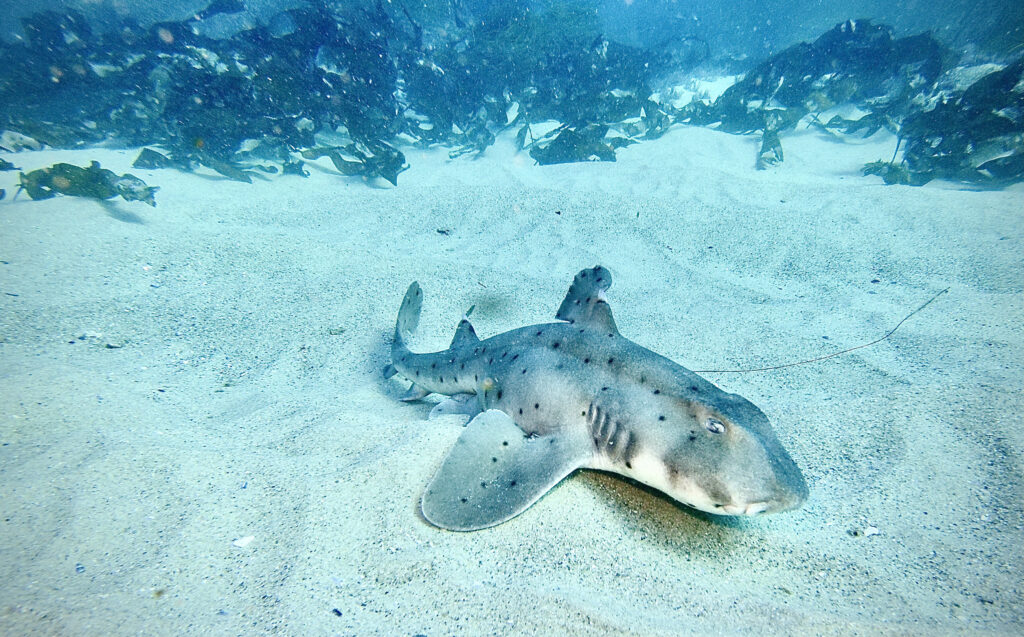Sharks are known to be some of the oldest species of animals on the planet, even predating trees on planet Earth! Due to this, sharks are a varied group of animals, each looking vastly different from the next!
One such example of this is the California horn shark, that has adapted its horn-like spines over millions of years.
Let’s explore what makes these fascinating creatures so unique and why you might want to pay them a visit on your next trip to Blue Reef Aquarium Portsmouth.
What is a California horn shark?
The California horn shark (Heterodontus francisci) is a species of smaller shark, closely related to the small bullhead shark. You might even be able to spot the similarities!
With a rounded snout and distinctive bulges around the eyes, the California horn shark stands out as a great example of the adaptations that develop over millions of years of evolution.
Where do California horn sharks typically live?

As the name would suggest, California horn sharks inhabit the thousands of miles of Pacific coastline surrounding California and western Mexico.
These sharks maintain a territory of approximately 10,000 square feet which they roam for sometimes their entire lives.
The waters off California provide excellent shelter for the horn shark because it is very sensitive to light and spends most of its life hidden away in crevices or shaded areas of water.
What do California horn sharks look like?
California horn sharks are medium-sized sharks, measuring up to approximately 4 feet in length with a weight of 20 lbs (9kg). Their brown or grey back is dotted with white spots with a yellow underside that offers fantastic camouflage against predators.
California horn sharks are also known for their distinctive spines on the first and second dorsal fins as well as the anal fin. These spines make predators think twice before they decide to chow down on the horn shark. This is where the name comes from because they resemble horns.
The sharks distinctive eye bulges are its most prominent feature making it easily identifiable when swimming through our aquarium.
Strangely for most fish species, the males and females grow to approximately the same size, making them difficult to tell apart from a distance.
What do California horn sharks eat?
California horn sharks usually feed on invertebrates that live on the seafloor, particularly sea urchins and crabs, and occasionally other small fish.
Their mouth is perfectly positioned on the underside of their body to sweep the seabed and scoop up unsuspecting marine animals.
They have small, molar-like teeth that they use to crush the hard shells of crustaceans that they eat.
Lifecycle of a California horn shark

California horn sharks can live up to 50 years in the wild, but a lifespan of around 25 years is more typical.
These sharks maintain their numbers through large litters, with females laying up to 24 eggs at a time, even though they can take months to grow and hatch. During these months and subsequent months, California horn sharks demonstrate parental responsibilities by looking after their young through to maturity, something that is incredibly rare in fish and sharks generally.
California horn sharks are sometimes prey for larger marine animals such as larger sharks and mammals.
The California horn shark is a fantastic example of the diversity of marine life, showcasing the ability for sharks to thrive in a range of marine environments. Their lifespan and ability to reproduce show just how successful their adaptations have been to their survival.
If you’d like to see the California horn shark in the flesh, book your tickets for Blue Reef Aquarium Portsmouth today!
